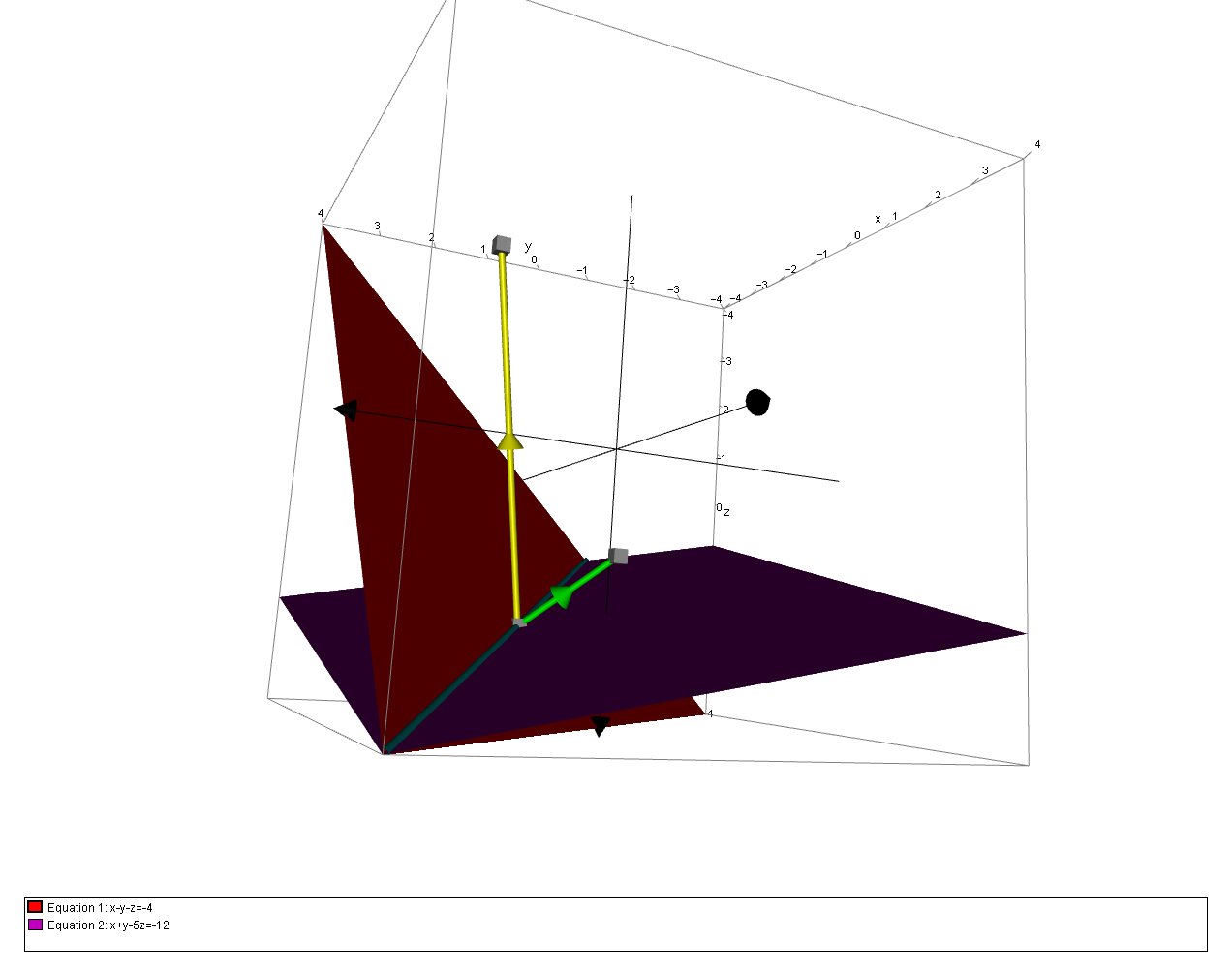How do you find the set of parametric equations for the line in 3D described by the general equations x-y-z=-4 and x+y-5z=-12?
2 Answers
The parametric equations are:
# { (x=6lamda), (y=4/3+4lamda), (z=8/3+2lamda) :} #
Explanation:
The two equations represent planes
There are a couple of approaches to this question, but this is the my preferred method from 3D vector analysis. It is slightly longer than other approaches but it helps gain a fuller understanding of vector planes, normals and lines:
The normal vector to a plane is given by the coefficients of
# Pi_1: \ \ x-y-z=-4 \ \ \ \ => vec(n_1) = ( (1), (-1), (-1) ) #
# Pi_2: \ \ x+y-5z=-12 => vec(n_2) = ( (1), (1), (-5) ) #
Then the direction of the line,
# vec(d) = ( (1), (-1), (-1) ) xx ( (1), (1), (-5) ) #
# \ \ \ \ = | (hat(i), hat(j), hat(k)), (1,-1,-1), (1,1,-5) | #
# \ \ \ \ = ( (+,{(-1)(-5)-(1)(-1)}), (-,{(1)(-5)-(1)(-1)}), (+,{(1)(1)-(1)(-1)}) )#
# \ \ \ \ = ( (5+1), (-(-5+1)), (1+1) )#
# \ \ \ \ = ( (6), (4), (2) ) #
And so as we have the direction vector, we can form the equation of the line:
# L: \ \ vec(r) = vec(a)+ lamda( (6), (4), (2) ) #
To find
# Pi_1: \ \ -y-z = -4#
# Pi_2: \ \ y-5z \ \ \ = -12#
If we solve these equations by adding them we get:
# -6z=-16 => z=8/3 #
And back substitution gives
# L: \ \ vec(r) = ( (0), (4/3), (8/3) )+ lamda( (6), (4), (2) ) #
To convert this from vector to parametric from we simply expand for a generic point
# ((x), (y), (z)) = ( (0), (4/3), (8/3) ) + lamda( (6), (4), (2) ) = ( (6lamda), (4/3+4lamda), (8/3+2lamda) )#
Hence the parametric equations are:
# { (x=6lamda), (y=4/3+4lamda), (z=8/3+2lamda) :} #
This 3D plot shows the planes, the normals, and the line of intersection:

The reqd. Parametric Eqns. of the Line are :
Explanation:
Observe that the reqd. Line, say,
intersecting Line of two planes
From
Hence, the Parametric Eqns. of

